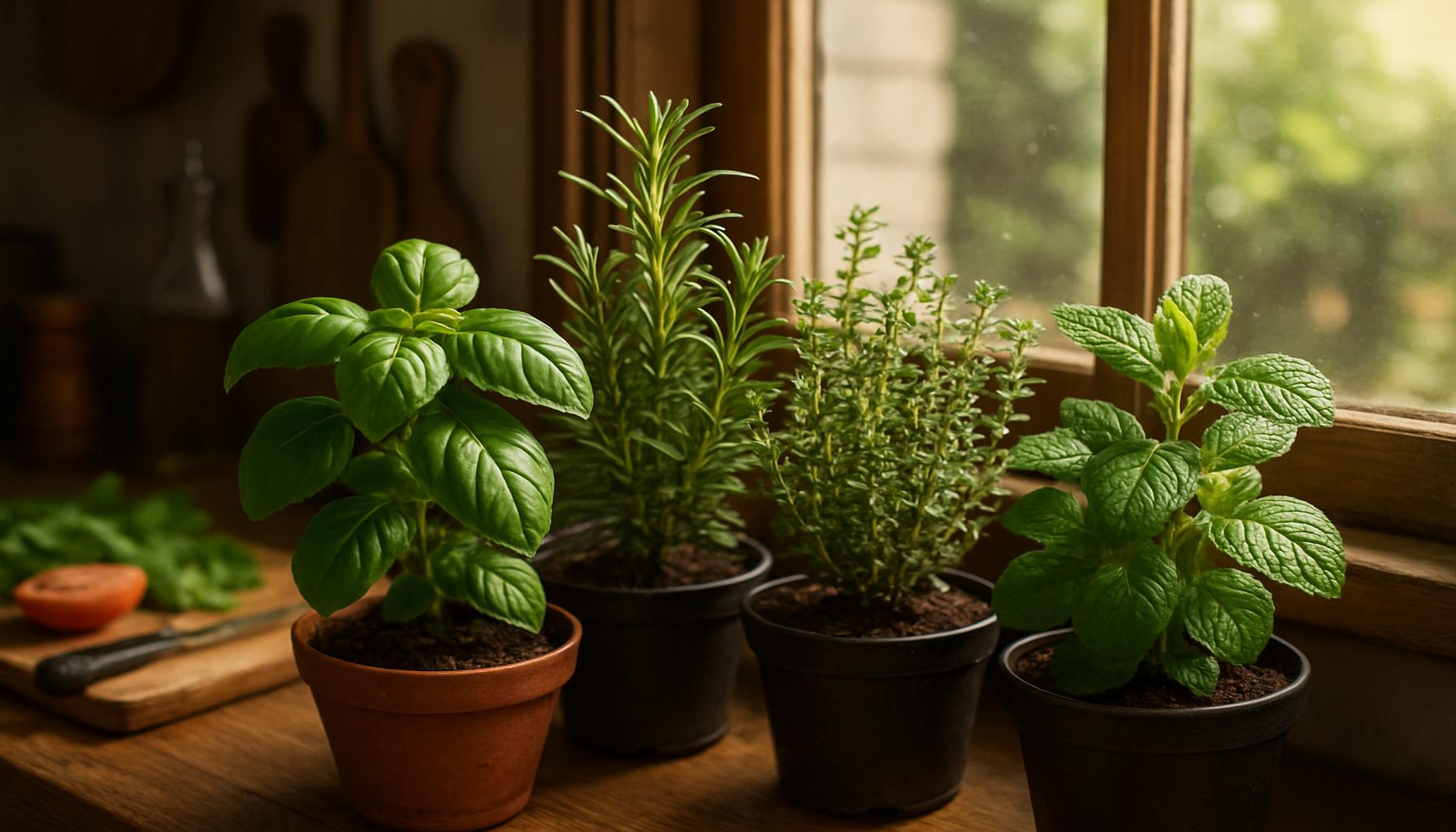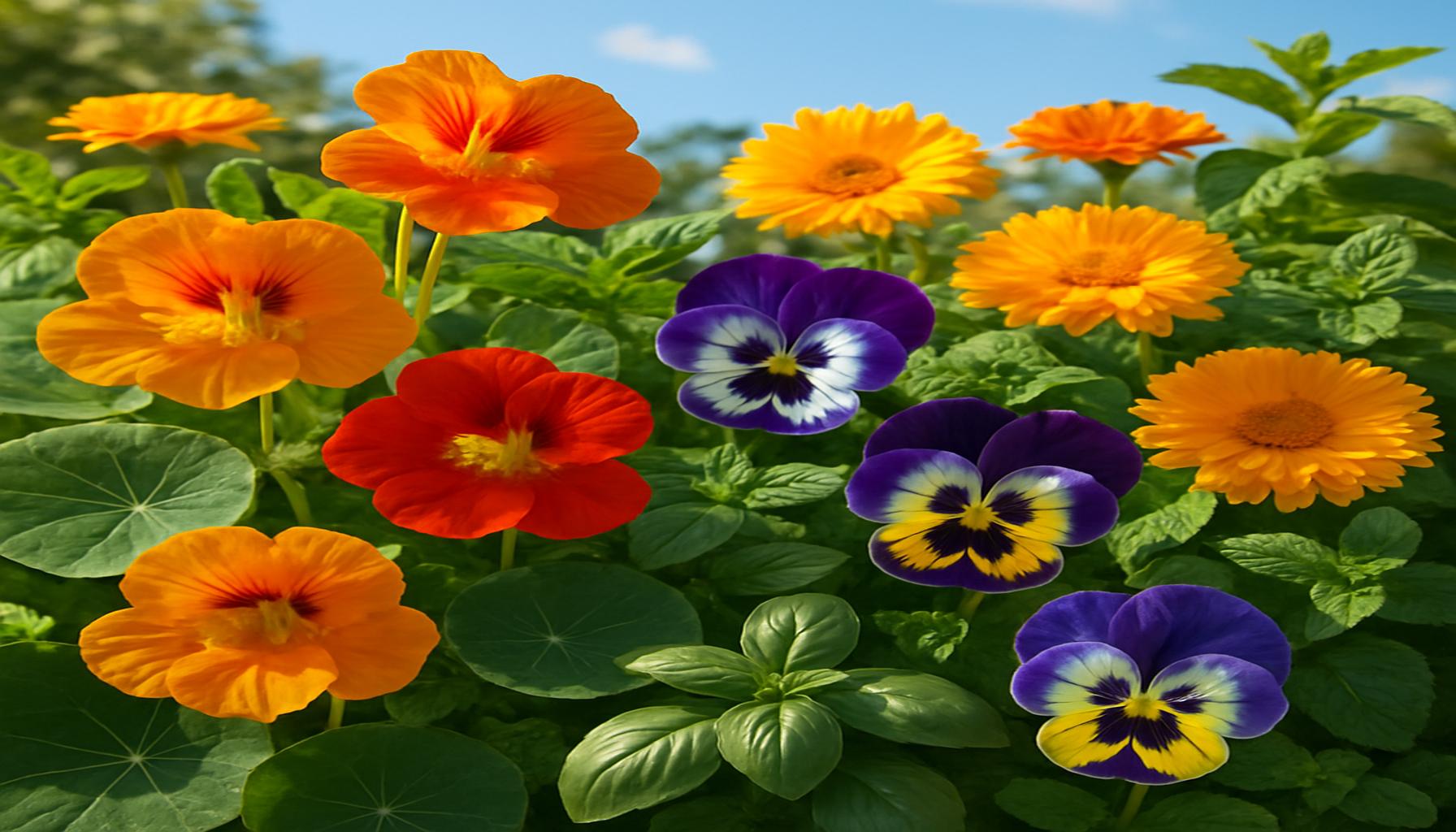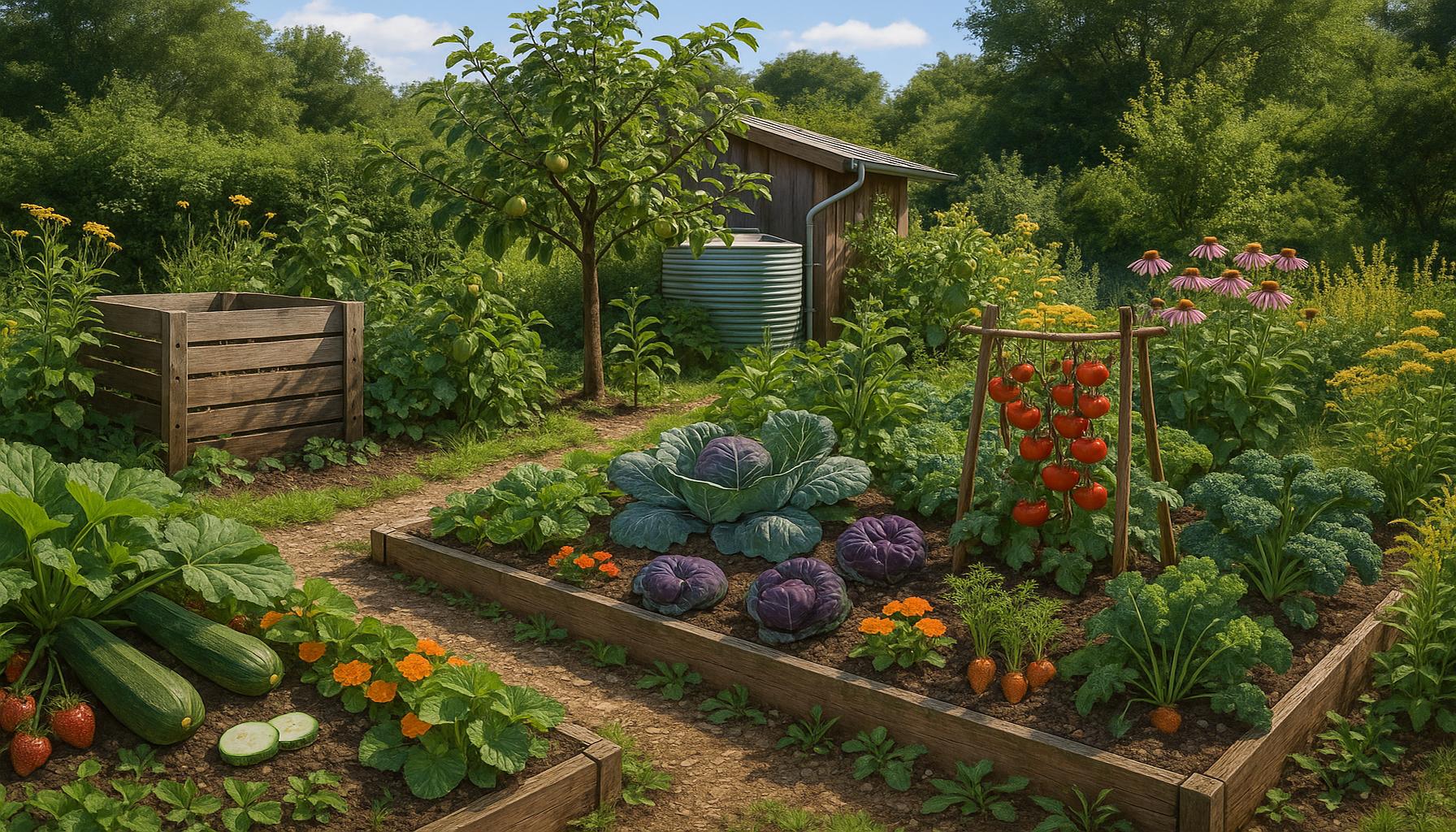Growing Aromatic Herbs at Home: A Guide for Beginners and Cooking Enthusiasts

Unlock the Flavors of Your Kitchen
Imagine stepping into your kitchen and being greeted by the vibrant scents of fresh herbs. Growing aromatic herbs at home not only enhances your cooking but also elevates your culinary experience. As the trend for home gardening continues to blossom in the United States, more individuals are discovering the joy and satisfaction of nurturing their own herbs, transforming cooking into a delightful sensory adventure.
Whether you’re a novice gardener or a seasoned chef, there are numerous benefits to cultivating herbs in your own space. Consider this:
- Health Benefits: Fresh herbs are packed with essential nutrients and antioxidants. For instance, basil is known for its anti-inflammatory properties, while parsley is rich in vitamins A and C. Incorporating these herbs into your dishes not only enhances flavor but also boosts nutritional value.
- Culinary Variety: Use a range of flavors to enhance your dishes. From the refreshing zing of mint in a summer salad to the earthy tones of thyme in a hearty stew, herbs allow for endless culinary creativity. Experiment with blending different herbs for unique flavor profiles.
- Cost-Effective: Save money by growing herbs that can be expensive at the store. Fresh basil and cilantro, for example, can cost over $3 a bunch in supermarkets. By growing these herbs at home, you not only save money but also ensure that they are at their freshest when it’s time to cook.
Creating a home herb garden is easier than you might think. With just a small pot, some quality potting soil, and a little sunlight, you can grow a thriving collection of herbs right on your windowsill or balcony. Herbs are typically low-maintenance and adapt well to limited spaces, making them an ideal choice for urban dwellers.
In this guide, we will explore essential tips and tricks for growing aromatic herbs, highlighting popular options like basil, thyme, and mint. Each of these herbs brings its unique character to your kitchen. For example, basil thrives in warm temperatures and requires a sunny spot, while thyme prefers well-drained soil and can tolerate some neglect, making it perfect for busy cooks.
Additionally, maintaining your herb garden can be incredibly rewarding. Regular harvesting promotes new growth, allowing you to enjoy the fruits of your labor throughout the season. Consider utilizing fresh herbs in unusual ways, such as infusing oils or creating herb-based sauces and dressings, to elevate everyday meals.
So, roll up your sleeves and embark on this green journey to enrich your kitchen and your meals! Not only will you cultivate a wonderful array of flavors at your fingertips, but you will also connect with nature and instill a sense of accomplishment with each little sprout that emerges.
DIVE DEEPER: Click here to discover the psychological benefits of art as therapy
Choosing the Right Herbs for Your Home Garden
As you embark on your journey to grow aromatic herbs at home, the first essential step is selecting the right herbs that suit your culinary preferences and growing conditions. While the choices might seem overwhelming at first, focusing on a few popular and versatile herbs can set the foundation for a successful garden. Here are five top contenders that every beginner and cooking enthusiast should consider:
- Basil: Revered for its sweet and fragrant leaves, basil shines in recipes like pesto and caprese salad. It thrives in sunny spots and requires regular watering, ensuring it remains hydrated but not waterlogged.
- Thyme: Known for its earthy tones, thyme can elevate everything from roasted vegetables to soups. This hardy herb is relatively drought-tolerant and prefers well-drained soil, making it perfect for those who may forget to water occasionally.
- Parsley: Often used as a garnish, parsley is incredibly nutritious and can be a great flavor enhancer for a variety of dishes. It works well in both sunny and partially shaded spots, adapting to different light levels with ease.
- Mint: Refreshingly aromatic, mint is a versatile herb that adds a delightful zest to beverages, salads, and desserts. It thrives in moist, fertile soil but can become invasive if planted directly in your garden, so consider growing it in pots.
- Cilantro: A staple in many cuisines, cilantro offers a burst of flavor in salsa, curries, and salads. It prefers cooler temperatures, so planting this herb in the spring or fall can result in a more successful harvest.
Once you’ve selected the herbs you’d like to grow, it’s time to consider your growing environment. Whether you have a spacious backyard, a small balcony, or just a windowsill, herbs can flourish in various settings. If you’re limited on space, you can use containers, allowing for mobility and easier care. Be sure to choose pots with drainage holes to keep the roots healthy and prevent water stagnation.
Moreover, consider the climate in your region, as this will greatly influence your herb garden’s success. In the United States, the USDA Plant Hardiness Zone Map categorizes regions based on climate conditions, which can guide you in selecting herbs suitable for your area. For instance, southern states with warmer climates often enjoy longer growing seasons, while northern regions may need to consider starting herbs indoors or using greenhouses during colder months.
As you plan your herb garden, it’s also vital to think about companion planting. This technique involves placing different herbs together that can mutually benefit each other. For example, mint and basil thrive together, as mint helps deter pests that might otherwise bother basil.
With careful planning and consideration, you will not only enhance your kitchen’s flavors but also create a beautiful and functional garden space. Growing aromatic herbs at home will not just supply your culinary adventures; it will also cultivate a connection to the earth and a deeper appreciation for the ingredients that elevate your cooking to new heights.
| Advantage | Description |
|---|---|
| Freshness | Home-grown aromatic herbs provide the highest level of freshness, offering the most potent flavors and aromas in your culinary creations. |
| Cost-Effective | Growing your own herbs saves money in the long run, reducing the need to buy expensive store-bought herbs that may not be as fresh. |
| Health Benefits | Cultivating herbs at home promotes a healthier diet, as fresh herbs are rich in nutrients and antioxidants, enhancing the overall flavor of dishes without adding extra calories. |
| Convenience | Having a ready supply of herbs just steps away from your kitchen streamlines cooking, making it easier to incorporate fresh flavors into your meals on a whim. |
As you embark on your journey of growing aromatic herbs, consider starting with easy-to-grow options like basil, mint, or rosemary. These herbs not only add flavor to your favorite recipes but also infuse your home with their delightful scents. The act of nurturing these plants can be therapeutic and rewarding, and it’s an ideal way to connect with nature, right within your living space.
Explore various growing mediums, such as soil or hydroponics, and experiment with different light conditions to find what works best for your herbs. With the right care, you’ll be able to enjoy the benefits of fresh herbs while enhancing your culinary skills and enjoying healthier meals.
Don’t hesitate to share your experiences and enjoy the journey of cultivating your very own aromatic garden!
DIVE DEEPER: Click here to discover the evolution of digital art
Essential Tips for Cultivating Your Home Herb Garden
As you dive into the rewarding hobby of growing aromatic herbs at home, several key practices can make a significant difference in your plants’ health and productivity. Understanding these fundamentals is paramount for both beginners and seasoned cooks who crave fresh, homegrown ingredients. Here are some essential tips to help you cultivate a thriving herb garden.
1. Soil Quality and Nutrition
The foundation of any successful herb garden lies within the soil. A mix rich in organic matter will enhance the growth of your herbs, providing them with necessary nutrients. Consider using a high-quality potting mix enriched with compost to promote robust growth. pH levels also play a role; most herbs prefer slightly acidic to neutral soil (pH 6.0 to 7.0). Testing your soil’s pH can be done with affordable kits available online or at local gardening stores.
2. Watering Wisely
Watering is an art that often requires a careful balance. Overwatering is a common mistake that leads to root rot, while underwatering can hinder growth and cause wilting. A general rule of thumb is to check the top inch of soil; if it’s dry, it’s time to water. Early mornings are the best time for watering as it allows plants to absorb moisture before the day’s heat.
3. Optimal Light Conditions
Most aromatic herbs thrive on sunlight. A sunny window sill or a south-facing balcony can provide the ideal conditions for your herbs. Aim for at least 6 to 8 hours of direct sunlight each day. If natural light is limited, consider using grow lights, which can extend your plants’ exposure and promote growth in dim conditions.
4. Pruning and Harvesting
Regular pruning not only helps keep your herbs healthy but also encourages fuller growth. When harvesting, always use sharp scissors or shears, cutting just above a leaf node. This method promotes bushier growth and prevents the plant from becoming leggy. Furthermore, harvesting often will keep your herbs at their peak flavor and aroma, ensuring you always have fresh herbs at your fingertips.
5. Pest Management
Pest problems can arise even in the best gardens. Nurturing an organic approach will often yield significant results. Inspect your herbs regularly for signs of pests like aphids or spider mites. A simple spray of water can eliminate many pests, while neem oil or insecticidal soap can help combat more persistent issues. Companion planting also plays a role here; herbs like dill and basil can repel harmful insects naturally.
6. Extending the Growing Season
For gardeners in colder climates, extending the growing season can be a pivotal aspect of herb gardening. Utilizing containers can allow for mobility indoors during colder months. Alternatively, consider using cloches or row covers made from lightweight fabric to protect your herbs from frost while they’re outside. Indoor growing lights can also facilitate an all-year-round harvest, offering you fresh flavors even in the depths of winter.
By embracing these practices, you can create an environment where your herbs not only survive but thrive. Each step in the process—from selecting the right herbs to ensuring they receive proper care—fosters a more rewarding gardening experience. Now, as the new shoots emerge and your garden flourishes, you can look forward to a vibrant supply of aromatic herbs that will elevate your home cooking to a delicious new level.
DIVE DEEPER: Click here to discover how creative writing can enhance your communication
Conclusion: Embarking on Your Herb Gardening Journey
As you embark on the fulfilling journey of growing aromatic herbs at home, it’s essential to embrace the learning process that comes with gardening. With the foundational knowledge of soil quality, watering techniques, optimal light conditions, and pest management firmly in hand, you are well-equipped to cultivate a thriving herb garden tailored to your culinary needs. Remember, the journey is just as rewarding as the destination; each aromatic herb you nurture holds the potential to transform your everyday meals.
Not only do homegrown herbs provide unparalleled freshness, but they also invite a deeper connection to the food you prepare. The rich flavors of basil, rosemary, and thyme are just a snip away, ready to be infused into your favorite dishes. Moreover, growing your herbs can also serve as a mindful practice, allowing you to escape the fast-paced world and immerse yourself in nature’s tranquility right in your kitchen.
As you experiment with various species and perhaps even some unique varieties, don’t hesitate to share tips and experiences with fellow gardening enthusiasts or local gardening groups. The world of herb cultivation is vast, and there’s always more to learn. Whether you have a sprawling garden or a quaint windowsill, the prospect of fresh herbs awaits you. So grab a pot, select your seeds, and embrace the aromatic wonders that will enhance your cooking and fill your home with delightful scents. Happy gardening!


